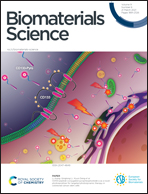Design and application of inorganic nanoparticles for sonodynamic cancer therapy
Abstract
As an alternative to photodynamic therapy (PDT), ultrasound-triggered tumor sonodynamic therapy (SDT) has garnered significant attention, owing to its high tissue penetration, few side effects, and reliable patient compliance. A sonosensitizer is the most important component in SDT, and high-quantum-yield safe sonosensitizers are crucial for SDT. Existing sonosensitizers mainly include organic sonosensitizers and inorganic sonosensitizers. Organic sonosensitizers, mainly some small dye molecules, have been widely studied. However, organic sonosensitizers have limited utility owing to their poor stability, rapid blood clearance, and potential phototoxicity. In contrast, inorganic sonosensitizers have stable chemical properties, long circulation time in the blood and can effectively reduce phototoxicity. In addition to their utilization as sonosensitizers, some inorganic nanoparticles can also operate as carriers for delivering organic sonosensitizers, effectively overcoming the inherent shortcomings of organic small-molecule sonosensitizers. This review mainly focuses on inorganic nanomaterial-based SDT, the possible mechanisms of SDT, and newly developed inorganic sonosensitizers, as well as the challenges and possible solutions associated with their clinical translation are introduced.



 Please wait while we load your content...
Please wait while we load your content...